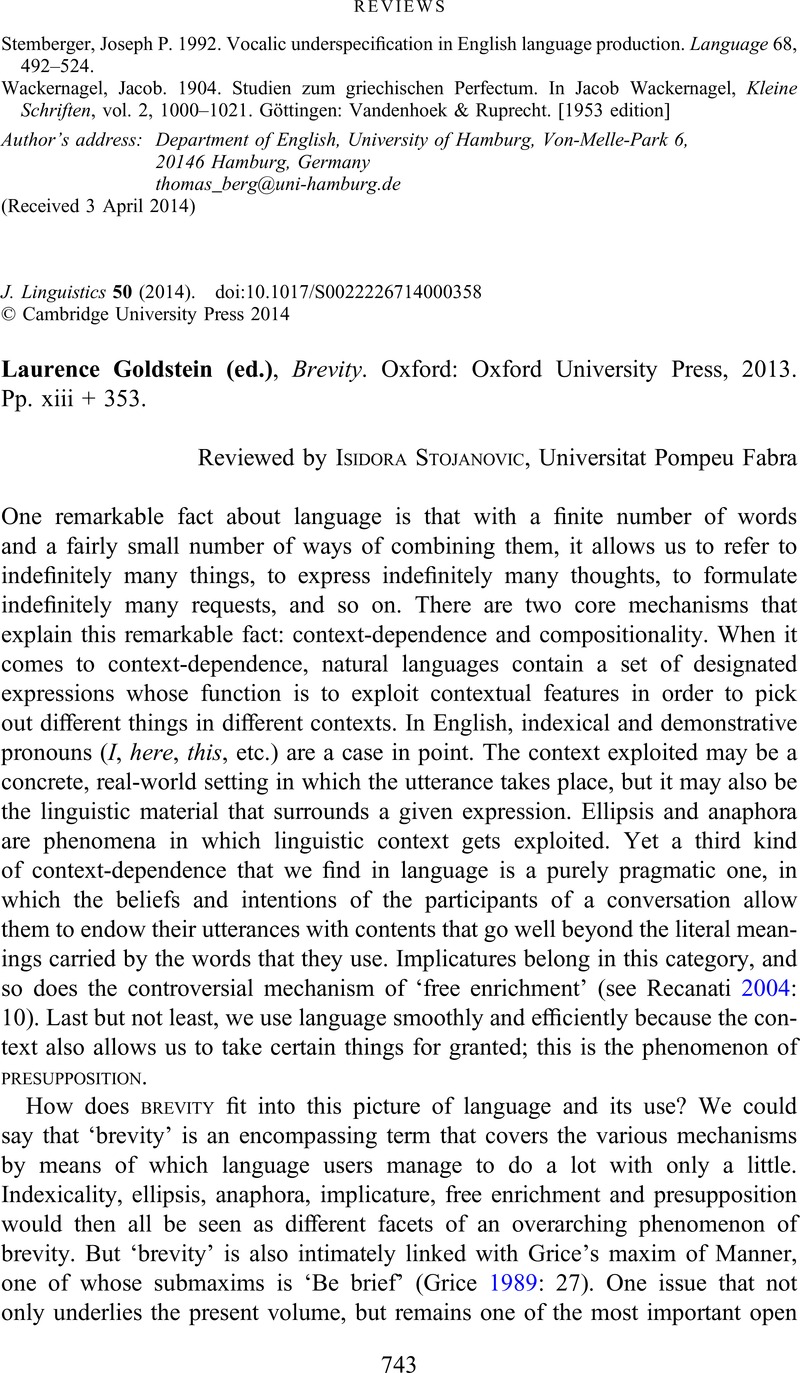No CrossRef data available.
Article contents
Laurence Goldstein (ed.), Brevity. Oxford: Oxford University Press, 2013. Pp. xiii + 353.
Published online by Cambridge University Press: 15 October 2014
Abstract
An abstract is not available for this content so a preview has been provided. Please use the Get access link above for information on how to access this content.

- Type
- Reviews
- Information
- Copyright
- Copyright © Cambridge University Press 2014
References
REFERENCES
Di Eugenio, Barbara & Webber, Bonnie. 1996. Pragmatic overloading in natural language instructions. International Journal of Expert Systems 9, 53–84.Google Scholar
Grice, H. Paul. 1989. Studies in the way of words. Cambridge, MA: Harvard University Press.Google Scholar
Heim, Irene. 1983/2002. On the projection problem for presuppositions. In Portner, Paul & Partee, Barbara H. (eds.), Formal semantics: The essential readings, 249–260. Oxford: Blackwell.Google Scholar
Schlenker, Philippe. 2012. Maximize presupposition and Gricean reasoning. Natural Language Semantics 20, 391–429.Google Scholar
Simons, Mandy. 2006. Presupposition without common ground. Ms., Carnegie Mellon University.Google Scholar
Soames, Scott. 1989. Presupposition. In , DovGabbay, M. & Guenther, Franz (eds.), Handbook of philosophical logic, vol. 4, 553–616. Dordrecht: Reider.CrossRefGoogle Scholar
Stalnaker, Robert. 1974. Pragmatic presuppositions. In Munitz, Milton K. & Unger, Peter (eds.), Semantics and philosophy, 197–213. New York: New York University Press.Google Scholar


